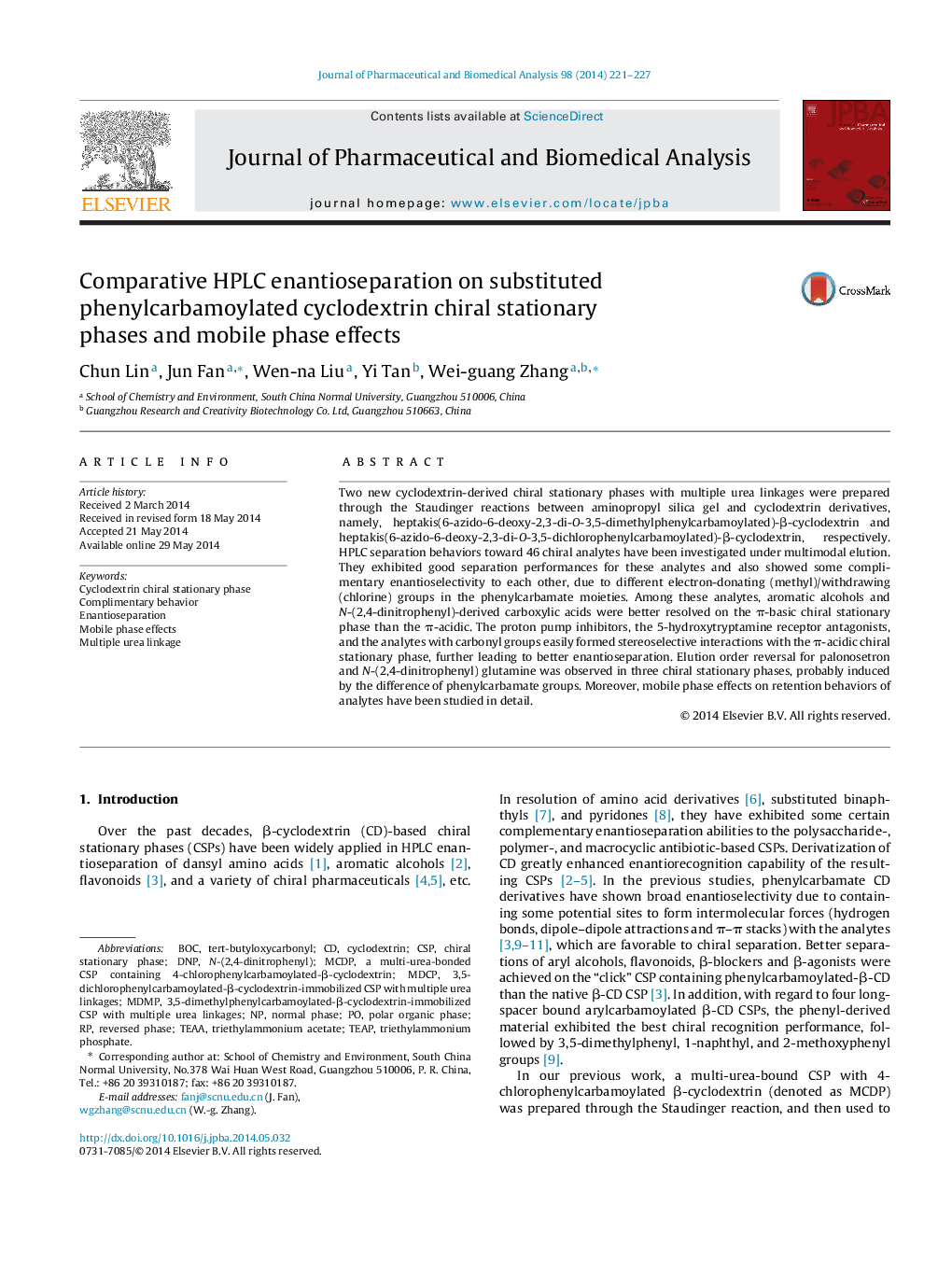| Article ID | Journal | Published Year | Pages | File Type |
|---|---|---|---|---|
| 1221101 | Journal of Pharmaceutical and Biomedical Analysis | 2014 | 7 Pages |
•Syntheses of two multi-urea-bound cyclodextrin CSPs via the Staudinger reactions.•Complimentary separation of π-acidic/basic phenylcarbamoylated cyclodextrin CSPs.•Effects of organic modifier and mobile phase pH on chiral recognition.•Elution order reversal of enantiomers induced by phenylcarbamate groups.
Two new cyclodextrin-derived chiral stationary phases with multiple urea linkages were prepared through the Staudinger reactions between aminopropyl silica gel and cyclodextrin derivatives, namely, heptakis(6-azido-6-deoxy-2,3-di-O-3,5-dimethylphenylcarbamoylated)-β-cyclodextrin and heptakis(6-azido-6-deoxy-2,3-di-O-3,5-dichlorophenylcarbamoylated)-β-cyclodextrin, respectively. HPLC separation behaviors toward 46 chiral analytes have been investigated under multimodal elution. They exhibited good separation performances for these analytes and also showed some complimentary enantioselectivity to each other, due to different electron-donating (methyl)/withdrawing (chlorine) groups in the phenylcarbamate moieties. Among these analytes, aromatic alcohols and N-(2,4-dinitrophenyl)-derived carboxylic acids were better resolved on the π-basic chiral stationary phase than the π-acidic. The proton pump inhibitors, the 5-hydroxytryptamine receptor antagonists, and the analytes with carbonyl groups easily formed stereoselective interactions with the π-acidic chiral stationary phase, further leading to better enantioseparation. Elution order reversal for palonosetron and N-(2,4-dinitrophenyl) glutamine was observed in three chiral stationary phases, probably induced by the difference of phenylcarbamate groups. Moreover, mobile phase effects on retention behaviors of analytes have been studied in detail.
Graphical abstractFigure optionsDownload full-size imageDownload as PowerPoint slide
